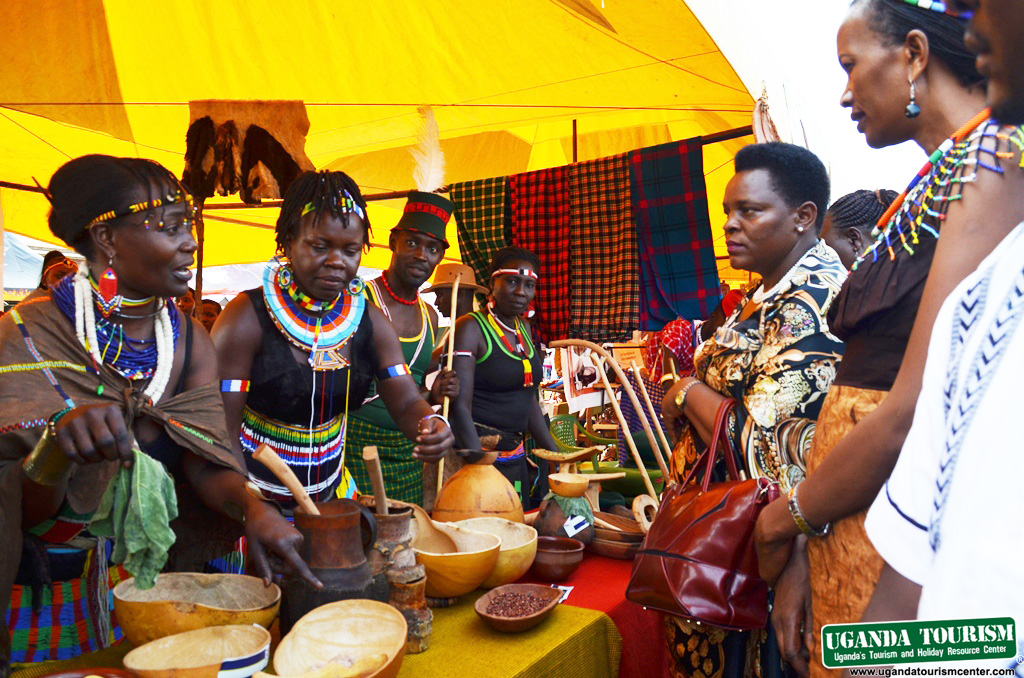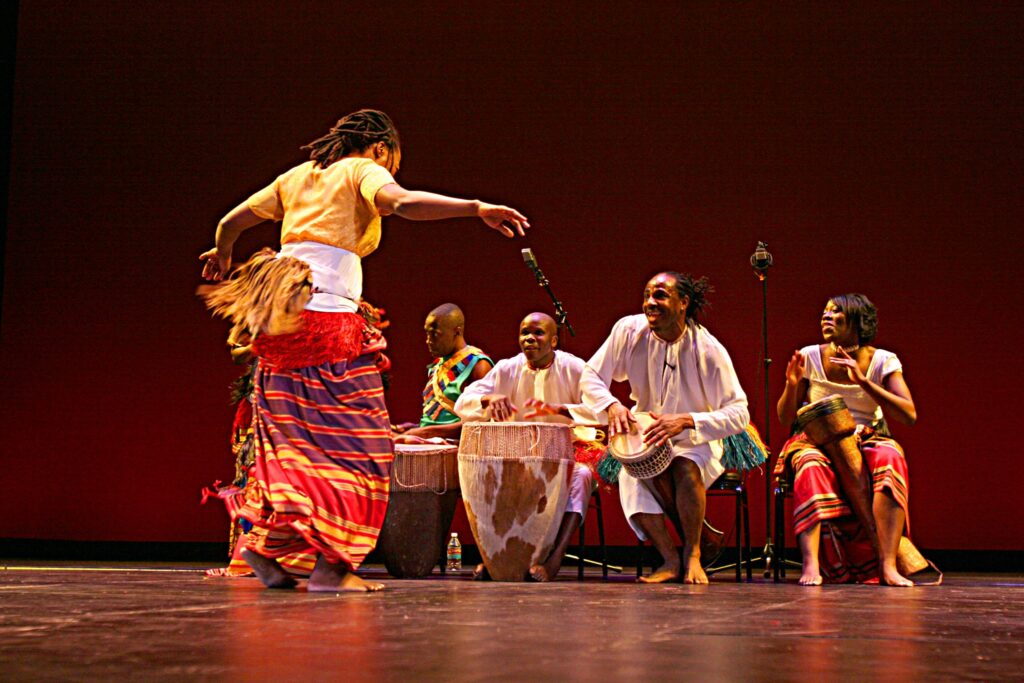Tribes of Uganda
Uganda is a country in East Africa known for its cultural diversity and the presence of numerous ethnic groups or tribes.
These tribes contribute to the vibrant cultural tapestry of the nation, each with its distinct traditions, languages, and customs. The country’s multiculturalism is a result of historical migration, intermarriage, and the influence of neighbouring regions.

Uganda is home to a significant number of tribes, and the exact count may vary depending on how tribes are classified and defined.
The Ugandan government officially recognizes 56 indigenous tribes within its borders. However, it is important to note that this number is not exhaustive, as there are additional sub-groups and ethnic communities that may have distinct cultural identities.
It is worth mentioning that the classification and categorization of tribes in Uganda is a complex matter due to intermarriage, migration, and the blending of cultures over time. As a result, some individuals may identify with multiple tribes or consider themselves part of a broader ethnic group.
Overall, Uganda’s diverse tribal landscape reflects the country’s multicultural fabric and contributes to its rich cultural heritage.
The tribes in Uganda represent a wide range of ethnic identities, and they are spread across different regions of the country.
The largest tribe is the Baganda, who primarily inhabit the central region, including the capital city of Kampala. Other prominent tribes include the Banyankole, Acholi, Langi, Iteso, Lugbara, Batoro, Bakiga, and Karamojong, among many others.
Each tribe has its unique cultural practices, social structures, and ways of life. Some tribes are predominantly agricultural, relying on farming and livestock herding, while others have traditions rooted in hunting, fishing, or craftsmanship. Music, dance, storytelling, and traditional ceremonies play an essential role in the cultural expressions of these tribes, showcasing their rich heritage and history.
It is important to note that while these tribes have distinct identities, there is also a sense of unity and national cohesion among the Ugandan people. Despite the diversity, Ugandans often come together to celebrate their shared values, such as hospitality, resilience, and communal harmony.
The tribes in Uganda not only preserve their cultural heritage but also contribute to the country’s overall cultural, artistic, and linguistic diversity. This diversity is celebrated and cherished as an integral part of Uganda’s national identity.
Below is a brief description of different tribes within Uganda
- Baganda: The Baganda people are the largest ethnic group in Uganda and are primarily located in the central region, including the capital city of Kampala. They have a well-organized hierarchical social structure and are known for their vibrant music, dance, and traditional ceremonies.
- Banyankole: The Banyankole, also known as Bahima and Ankole, reside in the southwestern part of Uganda. They are traditionally cattle herders and have a strong attachment to their cattle. The Banyankole are recognized for their unique cattle farming practices, including the long-horned Ankole cattle.
- Acholi: The Acholi people are found in the northern part of Uganda, particularly in the districts of Gulu, Kitgum, and Pader. They have a rich cultural heritage and are known for their vibrant music, dance, and storytelling traditions. The Acholi were significantly affected by the Lord’s Resistance Army (LRA) insurgency, which had a profound impact on their society.
- Langi: The Langi people live in the Lango sub-region of northern Uganda. They are predominantly agriculturalists and are known for their skill in farming, particularly in cultivating crops like millet, sorghum, and groundnuts. The Langi have a unique cultural heritage, including music, dance, and folklore.
- Iteso: The Iteso, also known as the Teso people, reside in the eastern part of Uganda, particularly in the districts of Soroti, Kumi, and Teso. They are primarily farmers, cultivating crops such as millet, sorghum, and maize. The Iteso have a rich cultural heritage, with traditional dances and festivals being an integral part of their society.
- Lugbara: The Lugbara people are located in the northwestern part of Uganda, mainly in the districts of Arua, Koboko, and Maracha. They are primarily farmers and are known for their cultivation of crops like millet, cassava, and groundnuts. The Lugbara have a unique social organization and rich cultural traditions.
- Batoro: The Batoro are a Bantu ethnic group living in the western part of Uganda, particularly in the districts of Kabarole and Kasese. They are culturally related to the Baganda and have a monarchy system led by the Omukama (king). The Batoro have distinct music, dance, and traditional ceremonies.
- Bakiga: The Bakiga people reside in the southwestern part of Uganda, primarily in the districts of Kabale, Rukungiri, and Kisoro. They are predominantly agriculturalists and are known for their terraced farming on the hilly landscapes of the region. The Bakiga have unique cultural practices, including their traditional dance forms.
- Karamojong: The Karamojong people are pastoralists who reside in the northeastern part of Uganda, particularly in the Karamoja region. They are known for their nomadic lifestyle and have a strong reliance on cattle herding. The Karamojong have distinct cultural practices, including their colorful beadwork, traditional attire, and unique ceremonies.
- Japadhola: The Japadhola, also known as the Padhola, are an ethnic group found in the eastern part of Uganda, primarily in the districts of Tororo and Busia. They are predominantly agriculturalists, cultivating crops such as millet, cassava, and beans. The Japadhola have a rich cultural heritage, including traditional music, dance, and art forms.
- Bagisu: The Bagisu people reside in the eastern part of Uganda, particularly in the districts of Mbale and Bududa. They are known for their cultural practice of male circumcision ceremonies, known as “Imbalu,” which is considered a rite of passage into manhood. The Bagisu have vibrant dance traditions, and their music is often accompanied by the sound of traditional instruments like the inanga.
- Alur: The Alur people live in the northwestern part of Uganda, primarily in the districts of Nebbi, Zombo, and Arua. They are agriculturalists, cultivating crops such as maize, millet, and cassava. The Alur have a rich cultural heritage, including unique dance forms and traditional rituals.
- Basoga: The Basoga, also known as the Soga people, are located in the eastern part of Uganda, particularly in the districts of Jinja and Iganga. They are predominantly agriculturalists and have a strong connection to the Nile River, which is a significant part of their culture and livelihood. The Basoga have traditional music and dance forms that are distinct to their community.
- Banyoro: The Banyoro people reside in the western part of Uganda, primarily in the districts of Hoima and Masindi. They have a monarchy system led by the Omukama (king) and are known for their cultural traditions, including music, dance, and royal ceremonies. The Banyoro have a rich history and are known for their cultural pride.
- Bakonjo: The Bakonjo people live in the Rwenzori Mountains region of western Uganda, particularly in the districts of Kasese and Bundibugyo. They are primarily agriculturalists and are known for their cultivation of crops like coffee, bananas, and beans. The Bakonjo have a unique cultural heritage, including traditional music, dance, and folklore.
- Sebei: Sebei refers to both a region and an ethnic group located in eastern Uganda. The Sebei people are primarily found in Kapchorwa District and parts of Kween District. They are known for their traditional cultural practices, including male circumcision, which is considered a rite of passage into adulthood. The Sebei region is known for its beautiful landscapes, including the prominent Mount Elgon.
- Acholi: The Acholi people are an ethnic group residing mainly in northern Uganda, South Sudan, and parts of Kenya. They have a rich cultural heritage and are known for their unique customs, music, dance, and folklore. The Acholi people have experienced significant historical challenges, including conflicts and displacement, particularly during the Lord’s Resistance Army (LRA) insurgency in northern Uganda.
- Banyoro: The Banyoro are an ethnic group in Uganda primarily found in the Bunyoro region, which is located in western Uganda. The Banyoro have a distinct cultural identity, with their own language, traditions, and customs. The Bunyoro Kingdom has a long history and was once a powerful kingdom in the region. The Banyoro are known for their traditional music, dance, and royal rituals.
- Bafumbira: The Bafumbira are an ethnic group living in southwestern Uganda, primarily in the Kisoro District. They are closely related to the Bakiga people and share some cultural practices. The Bafumbira are known for their agricultural activities, with subsistence farming being a major occupation. They have a rich heritage of traditional dances, songs, and storytelling. The Bafumbira are also known for their proximity to the Virunga Mountains, which attract tourists interested in mountain gorilla trekking.
Below is the list of other tribes in Uganda
| · Lugbara | · Okebu | · Pokot | · Bakenyi | · Alur |
| · Ma’di | · Kumam | · Jie | · Madi | · Lugbara |
| · Dodoth | · Kuku | · Lendu | · Karimojong | · Bagwe |
| · Langi | · Dhopadhola | · Sebei | · Kumam | · Pokot |
| · Nyoro | · Bunyoro | · Nyole | · Sebei | · Madi |
| · Pian | · Gwere | · Sotho | · Samia | · Kiga |
| · Nyankore | · Bamba | · Masaaba | · Kakwa | · Karimojong |
Uganda is a country with diverse tribes, each contributing to its cultural richness. The Baganda are the largest tribe, known for their organized kingdom.
The Acholi, from northern Uganda, have a distinct culture and have faced challenges due to conflicts. The Banyankole of southwestern Uganda are renowned for their cattle-rearing tradition. These tribes, among others, add to Uganda’s vibrant cultural tapestry.


